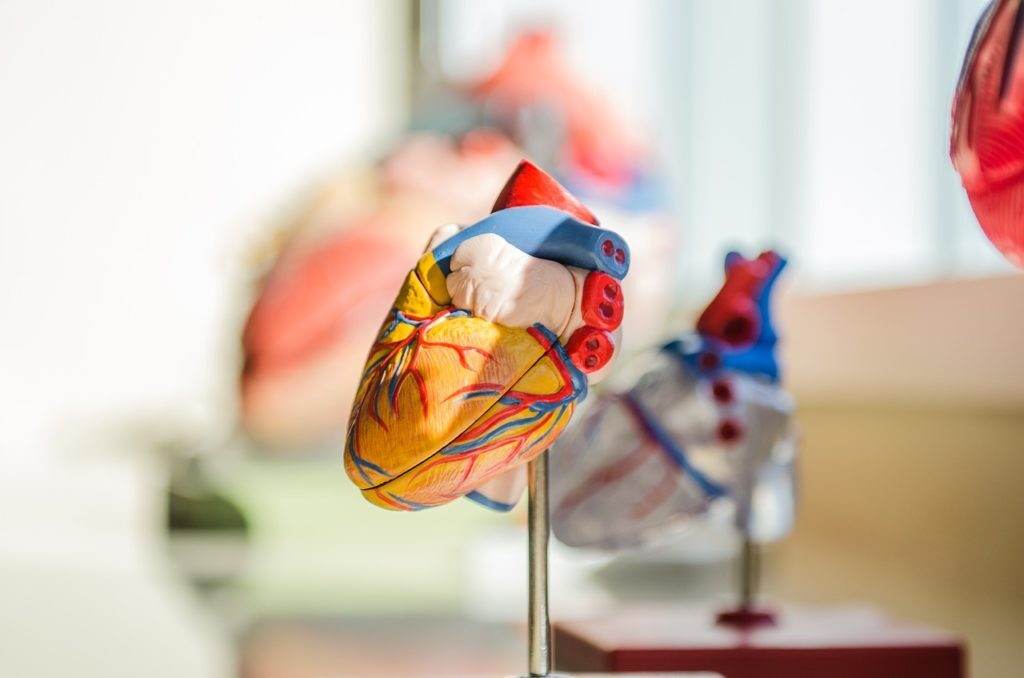
Divisions in the Heart
The traditional medical graphic for a heart shows the shape of an actual heart quite well. In the cartoonish picture of a heart, the top portion – the part that is rounded on either side – does resemble the two chambers of the heart called “atriums.” The lower portion of the heart, the more pointed section, contains the “ventricles.” As you might suspect from the terms, the upper atriums are similar to the entrance to a building that shares the same name. Atriums are meant to be a pleasant introduction to a building. They are usually spacious, often adorned with green plants, and a fair number of people may occupy the space, but it’s not necessarily a “workplace.”
The ventricles at the base of the heart appear from the outside as smaller but are far more potent in function. There’s a lot of pressure there! The walls of the ventricles are very thick with muscle whereas the walls of the atrium are thinner and have to pump with less force. In fact, the chamber that does the greatest work – the left ventricle during contraction – develops a pressure of 120 mm/Hg while the pressure in the atrium during contraction is less than 10 mm/Hg. As the right atrium fills with blood that has been “spent” returning from the veins, the pressure is actually zero, or even below zero.
In the heart it appears that “work distribution” is not always fair.
Of course, this is all God’s marvelous design! The right side of the heart, both atrium and ventricle, is receiving blood that has given its oxygen and nutrients to various parts of the body. From there the blood travels to the lungs to get re-oxygenated. So the right side of the heart does not need to be as strong as the left side which must pump the blood to all the extremities. Consequently, the muscle on the left side in both the atrium and the ventricle is thicker.
For a long time, I have thought about this exchange of blood gases as similar to confession/absolution.
Imagine the right atrium as similar to what some alcoholics call “rock bottom.” The blood has been everywhere and done all sorts of things, but now has nothing left to give. We think of the younger son in Luke 15: “And when he had spent everything, a severe famine arose in that country, and he began to be in need.” When he ran out of money, things even got worse! That’s rock bottom. Like the younger son, it is often at a similar juncture we begin to consider owning the responsibility for sin. For him, not yet!
Before the young boy thought of returning home, he took matters into his own hands and “hired himself out.” (Luke 15:15). If you remember the Parable of the Prodigal Son, that self-salvation did not work out too well. Things got even worse! People treated him worse than pigs. In my analogy, he realizes that he needs outside help. The heart is going to need the lungs – as the son needs his father’s grace.
Jesus describes the prodigal’s “conversion” in these words, “when he came to himself…” (Luke 15:17). He was not home yet, but he realized he wasn’t the person he was supposed to be. Then what did he remember? He remembered the goodness of his father. So he headed home.
The distance from the right ventricle to the lungs is not far. In the lungs, something wonderful happens. The carbon dioxide gathered from various organs and tissues is released through the lungs, and the replenishment of oxygen is passively transferred back into the blood. In my metaphor, this is the grace of Christ. To use Luther’s words, this is the “great exchange.” Christ takes away my sin and gives me His righteousness.
When the blood has been re-oxygenated, it returns to the left atrium. This resembles the Sabbath rest Who is Christ! One thing we should do every day is rest in Christ. We should meditate on the great exchange of His righteousness for our sin. We should acknowledge that we are forgiven! We are “holy!” We are “children of God!” We are a “royal priesthood!” This is also what worship is meant to be. Resting in Christ. That’s why it’s called “a sanctuary,” similar to “atrium.”
But Christians are created in Christ Jesus “to do good works which God prepared in advance for us to do.” (Ephesians 2:10) I’ve got to tell someone about Jesus! I’ve got to share all of this Gospel goodness and life of love with others. So after our time in the atrium of mercy, we are moved into the left ventricle of vigorous work. And in the great burst of energy the heart pumps out for the rest of the body and oxygen necessary for life. Christ is necessary for life. He came to give us “life and give it abundantly!” (John 10:10b)
Prayer: Lord Jesus Christ, we praise You that when we sin there is still hope. Give us the wisdom not to rely upon ourselves, but to repent of ourselves, and our sin, and seek Your cleansing mercy. And after receiving the replenishment of redemption, move us with energy to share the astonishing abundant life You give us now and forever. In Your strong Name we pray. Amen.
